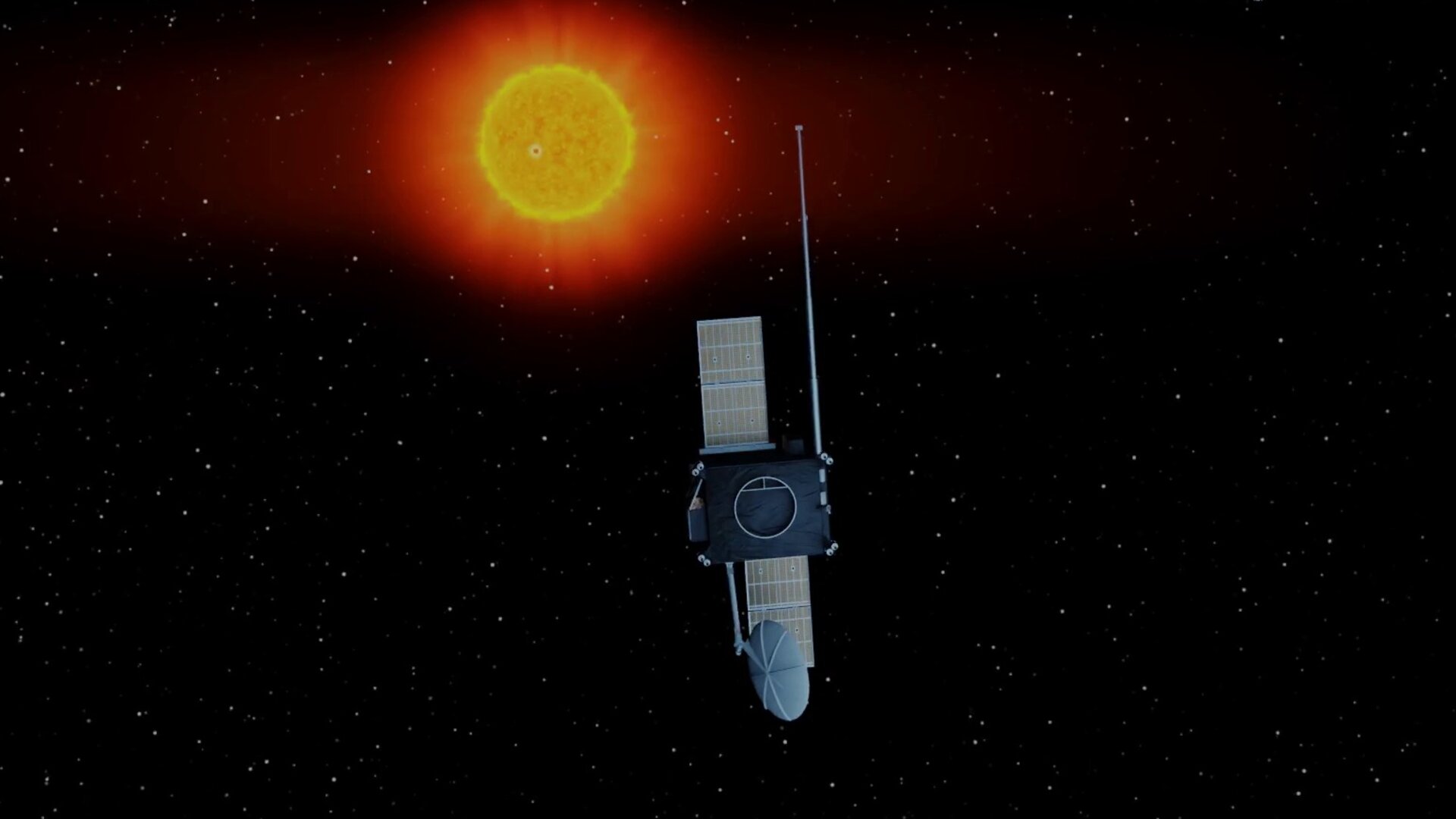ESA rocks space weather
This week, to coincide with the fifteenth annual European Space Weather Week, ESA is celebrating the dynamic phenomenon of space weather.
It’s difficult to comprehend the size and sheer power of our Sun — a churning ball of hot gas 4.6 billion years old and 1.3 million times larger than Earth — that for the most part remains a regular, yet distant part of our lives.
Unpredictable and temperamental


Access the video
In space, this hotly glowing star plays a remarkable role, dominating our Solar System. Unpredictable and temperamental, the Sun has made life on the inner planets of the Solar System impossible, due to the intense radiation combined with colossal amounts of energetic material it blasts in every direction, creating the ever-changing conditions in space known as ‘space weather’.
Considering all of this, how did life come to thrive on Earth? Our magnetic field protects us from the solar wind — the constant stream of electrons, protons and heavier ions from the Sun — and from Coronal Mass Ejections (CMEs), the Sun’s occasional outbursts of billion-tonne clouds of solar plasma into space. The most extreme events, arrivals of fast CMEs or high-speed solar-wind streams, disturb our protective magnetic shield, creating geomagnetic storms at Earth.
Serious problems for modern life
These storms have the potential to cause serious problems for modern technological systems, disrupting or damaging satellites in space and the multitude of services — like navigation and telecoms — that rely on them, blacking out power grids and radio communication and creating a radiation hazard for astronauts in space, even serving potentially harmful doses of radiation to astronauts on future missions to the Moon or Mars.
While these events can’t be stopped, advance warning of an oncoming solar storm would give operators of satellites, power grids and telecommunication systems time to take protective measures.
Watching for solar hazards
ESA’s planned Lagrange mission will support provision of just such advance warnings.


Access the video
Watching the Sun from a unique position in space, the Lagrange satellite will allow monitoring of the potentially hazardous sunspots and high-speed solar wind streams before they come into view from Earth, and detect solar events and their propagation toward the Earth with higher accuracy than is possible today. Data from the Lagrange mission will be transmitted to the Earth and distributed into ESA’s Space Weather Service Network in near real-time, to generate warnings and forecasts.
Protective measures against space weather are becoming increasingly important, as much of modern human society becomes ever more reliant on space-based services, vulnerable to the Sun’s outbursts.
As a result, at ESA's next Ministerial Council in 2019, space weather and the needed early warning services will be a main topic presented as part of the Agency's vision for the future in the emerging domain of space safety and security.
This week, ESA will highlight the unique phenomenon of space weather, from the science behind it and how we study it, to its effect on satellites in space and ESA’s plans for the future.
Keep your eye on ESA’s online channels to find out more, or follow these hashtags on social media:
#SpaceWeather
#SolarHazards
#SafeguardingOurPlanet














 Germany
Germany
 Austria
Austria
 Belgium
Belgium
 Denmark
Denmark
 Spain
Spain
 Estonia
Estonia
 Finland
Finland
 France
France
 Greece
Greece
 Hungary
Hungary
 Ireland
Ireland
 Italy
Italy
 Luxembourg
Luxembourg
 Norway
Norway
 The Netherlands
The Netherlands
 Poland
Poland
 Portugal
Portugal
 Czechia
Czechia
 Romania
Romania
 United Kingdom
United Kingdom
 Slovenia
Slovenia
 Sweden
Sweden
 Switzerland
Switzerland

































